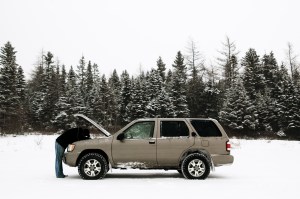Whether you’re heading out on your daily commute or an extended road trip, you need to be confident in your coverage before you get behind the wheel. The road can be a dangerous place and you want to be sure that you are protected if an incident does occur before you reach your destination.
No matter what kind of vehicle you drive, collision damage coverage is a key part of any automobile insurance package. But how does the amount of coverage you need change as your vehicle ages? We reached out to Heather Maher, insurance agent for AAA Northeast in Middletown, RI, to find out.
Defining your coverage
Before we look into collision damage coverage specifically, we need to point out that the coverage you have available will depend on your state as well as your provider. In general, physical damage coverage can be broken down into two categories:
Collision coverage includes damage inflicted during a collision with another vehicle or a stationary object. This is the more common and, thus, more expensive coverage type.
Comprehensive coverage, on the other hand, includes any vehicle damage that occurs when the vehicle is not in motion, such as a flood, theft, fire or even animal damage.
In either case, coverage is based on actual cash value – which naturally depreciates over time – and is subject to deductibles, which are selected by the policyholders.
When you drive an older vehicle
Contrary to what you might assume, there isn’t some magic number as far as how old your vehicle must be before you adjust your collision damage coverage accordingly. In fact, as Maher points out, it’s the value of your vehicle you need to really be concerned with. She recommends that consumers calculate the difference between coverage costs and the maximum amount they can recover from a claim. Bear in mind that most insurance companies will only reimburse you up to the actual cash value of the vehicle after an accident.
Even when it comes to actual cash value, you have to approach each vehicle on a case-by-case basis. Not all vehicles depreciate at the same rate. If a vehicle has enjoyed strong maintenance and boasts low mileage, a policyholder may be willing to maintain the same amount of physical damage coverage due to the perceived value of their vehicle.

Determining the coverage you need
Applying your vehicle’s actual cash value to your maximum recoverable claim amount is a good rule of thumb to help decide how much coverage is enough. However, Maher has another suggestion for drivers of older cars. In most circumstances, the insured would be effectively covered with a comprehensive plan and an uninsured motorist property damage plan.
Uninsured motorist property damage coverage – which isn’t available in all states (contact your agent for details) – comes into play when your vehicle is damaged by a driver who doesn’t have automobile insurance. Such a policy often pays for repairs up to a certain amount, providing some cushion if you do wind up in a crash. Although the insured would not be covered if they’re found at fault or if the other driver cannot be identified, this combination of comprehensive and UMPD offers an affordable alternative to full-fledged collision damage coverage. Moreover, it allows policyholders to retain some protection while not overspending on their aging vehicle.
Changing your coverage
You can make changes to your coverage at any time, but when the value of your vehicle no longer justifies extensive collision coverage (i.e., barely exceeds your deductible), it’s time to act. But don’t worry. If the resulting change affects your premium in any way, the cost is prorated from the date of the change until the end of the current policy term, Maher said.
Keep in mind, however, that this coverage isn’t retroactive. So, don’t plan on changing your coverage after an incident resulting in damage occurs. At this point, this damage would not fall under the protection of your updated policy then or in the future. Such rationale might seem like common sense, but it’s still worth clarifying.
Other factors to consider
Although the age of your vehicle is one key factor you should keep in mind as you adjust your coverage, it’s far from the only one that might impact your plan. Adding a teen or young adult –often known as a “youthful driver” – to your policy or even filing a claim can lead to increases in your premium. Be aware of how such changes may affect your policy and be prepared to update your coverage if necessary.
Of course, if you do have any concerns regarding your policy, feel free to reach out to one of our agents or visit our website for details on the coverage AAA provides.
One Thought on “Collision Damage Coverage for Older Vehicles”
Leave A Comment
Comments are subject to moderation and may or may not be published at the editor’s discretion. Only comments that are relevant to the article and add value to the Your AAA community will be considered. Comments may be edited for clarity and length.
















Thank you for your excellent advice on car rental insurance!